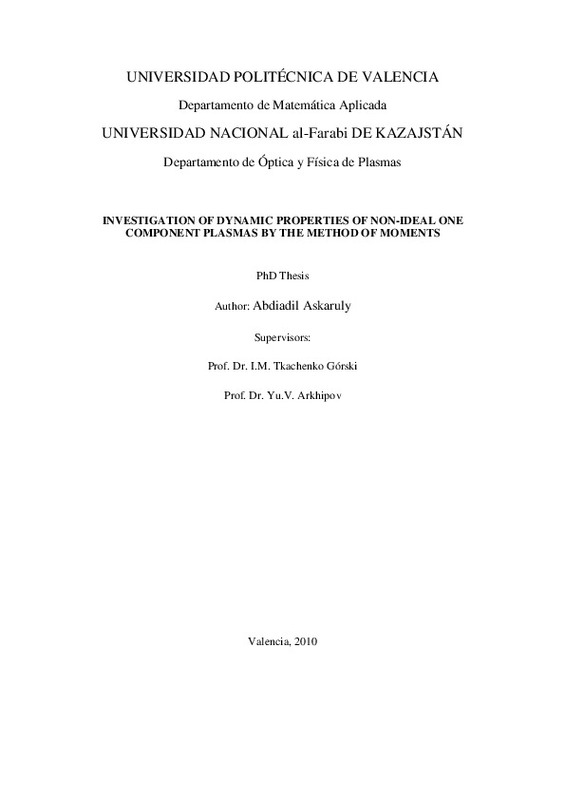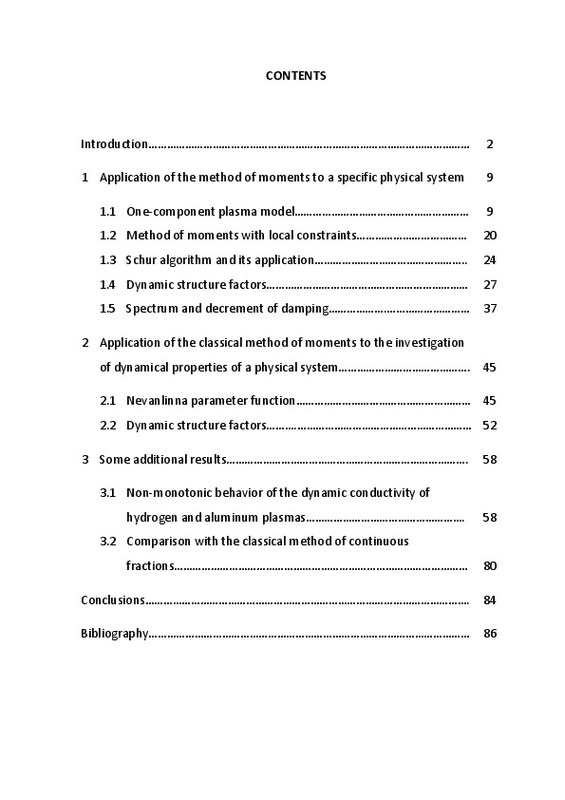- RiuNet repositorio UPV
- :
- Investigación
- :
- Tesis doctorales
- :
- Ver ítem
JavaScript is disabled for your browser. Some features of this site may not work without it.
Buscar en RiuNet
Listar
Mi cuenta
Estadísticas
Ayuda RiuNet
Admin. UPV
Investigation of dynamic properties of non-ideal one component plasmas by the method of moments
Mostrar el registro completo del ítem
Askaruly, A. (2011). Investigation of dynamic properties of non-ideal one component plasmas by the method of moments [Tesis doctoral]. Universitat Politècnica de València. https://doi.org/10.4995/Thesis/10251/9474
Por favor, use este identificador para citar o enlazar este ítem: http://hdl.handle.net/10251/9474
Ficheros en el ítem
Metadatos del ítem
| Título: | Investigation of dynamic properties of non-ideal one component plasmas by the method of moments | |||
| Autor: | Askaruly, Abdiadil | |||
| Director(es): | Arkhipov, Yuriy | |||
| Entidad UPV: |
|
|||
| Fecha acto/lectura: |
|
|||
| Resumen: |
Investigation of dynamic properties of non-ideal one-component plasmas by the method of moments
Dynamic characteristics of strongly coupled one-component plasmas are studied within the moment approach with local constraints ...[+]
|
|||
| Palabras clave: |
|
|||
| Código UNESCO: |
|
|||
| Derechos de uso: | Reserva de todos los derechos | |||
| DOI: |
|
|||
| Editorial: |
|
|||
| Tipo: |
|
recommendations
Este ítem aparece en la(s) siguiente(s) colección(ones)
-
Tesis doctorales [5389]







![Text file [Text]](/themes/UPV/images/text.png)



